Discover 11 hidden attractions, cool sights, and unusual things to do in Wells (United Kingdom). Don't miss out on these must-see attractions: Ebbor Gorge, Wells Cathedral, and Bishop's Palace. Also, be sure to include Wells Town Hall in your itinerary.
Below, you can find the list of the most amazing places you should visit in Wells (England).
Table of Contents
Ebbor Gorge
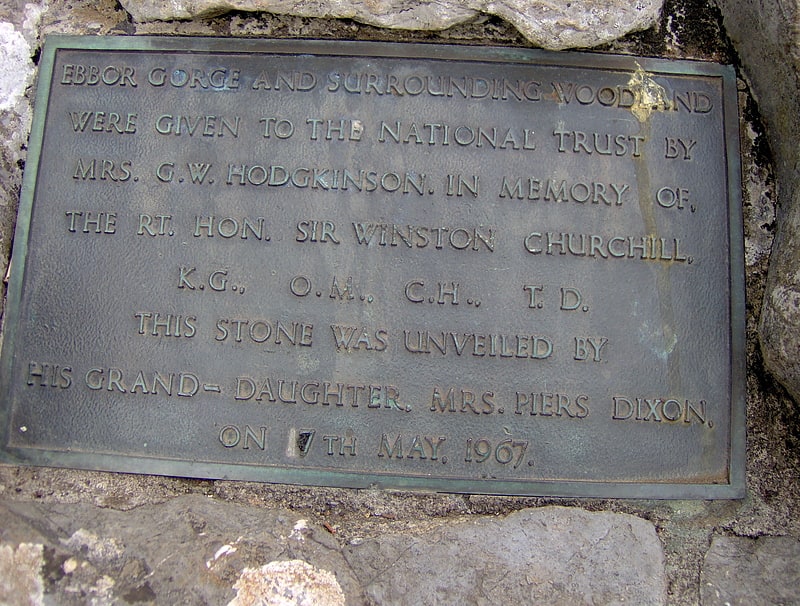
Nature preserve in England. Ebbor Gorge is a limestone gorge in Somerset, England, designated and notified in 1952 as a 63.5-hectare biological Site of Special Scientific Interest in the Mendip Hills. It was donated to the National Trust in 1967 and is now managed by Natural England as a national nature reserve.
The gorge was cut mostly into the Clifton Down Limestone, part of the Lower Carboniferous Pembroke Group, by water. The site was occupied by humans in the Neolithic Era and their tools and flint arrow heads have been discovered, along with pottery from the Bronze Age. There are also fossils of small mammals from the Late Devensian. The nature reserve provides a habitat for a variety of flora and fauna, including flowers, butterflies and bats.[1]
Address: Ebbor Lane, Wells
Wells Cathedral
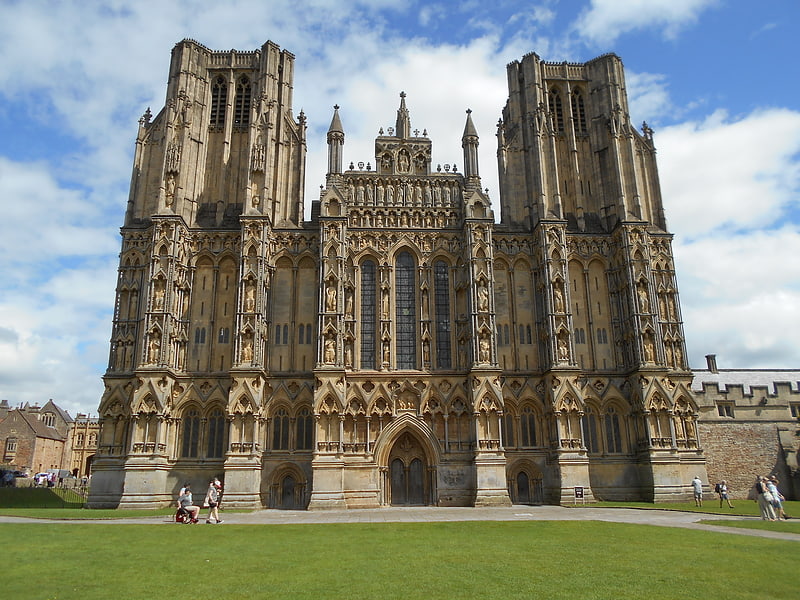
Gothic edifice with a 14th-century clock. Wells Cathedral is an Anglican cathedral in Wells, Somerset, England, dedicated to St Andrew the Apostle and seat of the Bishop of Bath and Wells, whose cathedra it holds as mother church of the Diocese of Bath and Wells. Built from around 1175 to replace an earlier church on the site since 705, it is moderately sized for an English cathedral. Its broad west front and large central tower are dominant features. It has been called "unquestionably one of the most beautiful" and "most poetic" of English cathedrals.
Its Gothic architecture is mostly in Early English style of the late 12th to early 13th centuries, lacking the Romanesque work that survives in many other cathedrals. Building began about 1175 at the east end with the choir. Historian John Harvey sees it as Europe's first truly Gothic structure, breaking the last constraints of Romanesque. The stonework of its pointed arcades and fluted piers bears pronounced mouldings and carved capitals in a foliate, "stiff-leaf" style. Its Early English front with 300 sculpted figures, is seen as a "supreme triumph of the combined plastic arts in England". The east end retains much ancient stained glass. Unlike many cathedrals of monastic foundation, Wells has many surviving secular buildings linked to its chapter of secular canons, including the Bishop's Palace and the 15th-century residential Vicars' Close. It is a Grade I listed building.[2]
Address: Cathedral Green, BA5 2UA Wells
Bishop's Palace
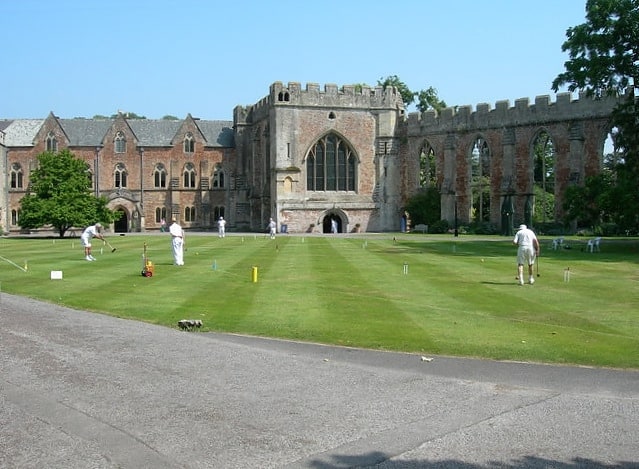
Historical place in Wells, England. The Bishop's Palace and accompanying Bishops House at Wells in the English county of Somerset, is adjacent to Wells Cathedral and has been the home of the Bishops of the Diocese of Bath and Wells for 800 years. It has been designated by English Heritage as a Grade I listed building.
Building of the palace started around 1210 by Bishops Jocelin of Wells and Reginald Fitz Jocelin. The chapel and great hall were added by Bishop Robert Burnell between 1275 and 1292. The walls, gatehouse and moat were added in the 14th century by Bishop Ralph of Shrewsbury. The Bishops House was added in the 15th century by Bishop Thomas Beckington. The great hall later fell into disrepair and was partially demolished around 1830.
The palace was originally surrounded by a medieval deer park. When the walls were built, streams were diverted to form the moat as a reservoir. In the 1820s, the grounds within the walls were planted and laid out as pleasure grounds by Bishop George Henry Law, who created a reflecting pond near the springs. Parts of the buildings are still used as a residence by the current bishop, however much of the palace is now used for public functions and as a tourist attraction.[3]
Address: Market Pl, BA5 2PD Wells
Wells Town Hall
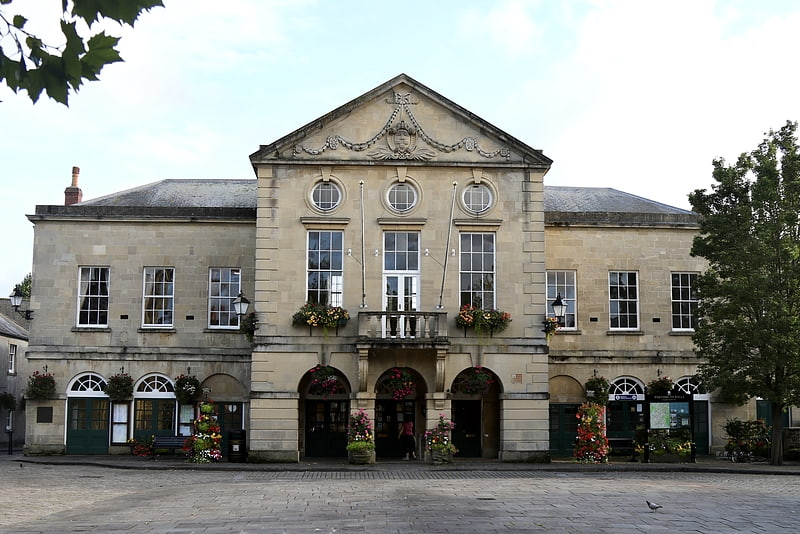
Wells Town Hall is a municipal building in the Market Place in Wells, Somerset, England. The building, which is the headquarters of Wells City Council, is a Grade II listed building.[4]
Wells and Mendip Museum
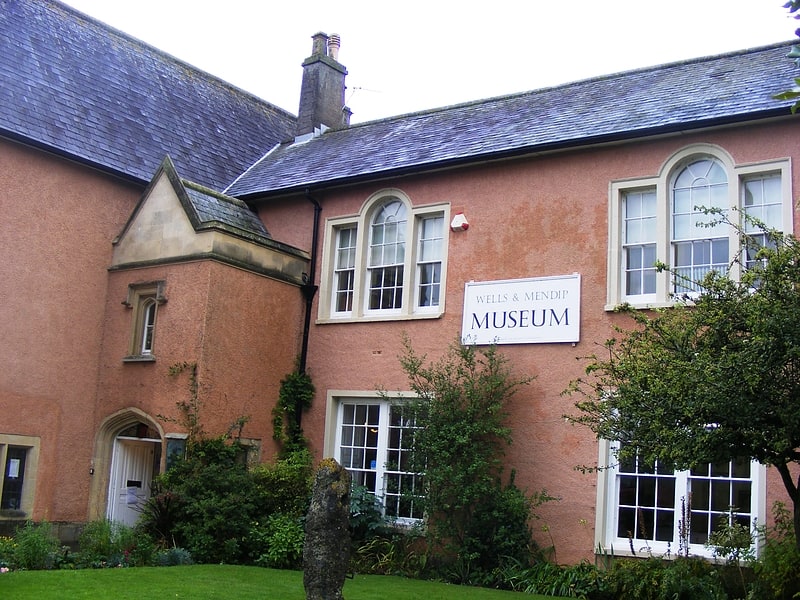
Museum in Wells, England. The Wells and Mendip Museum is a museum in the city of Wells. It is a registered charity and an accredited member of the Museums, Libraries and Archives Council. The exhibits include items of local history and archaeological finds.[5]
Address: 8 Cathedral Green, BA5 2UE Wells
Church of St Cuthbert

Building in Wells, England. The Church of St Cuthbert is an Anglican parish church in Wells, Somerset, England, dating from the 13th century. It is often mistaken for the cathedral. It has a fine Somerset stone tower and a superb carved roof. It is a Grade I listed building.[6]
Address: Wells, St Cuthbert St
Wells St Andrew
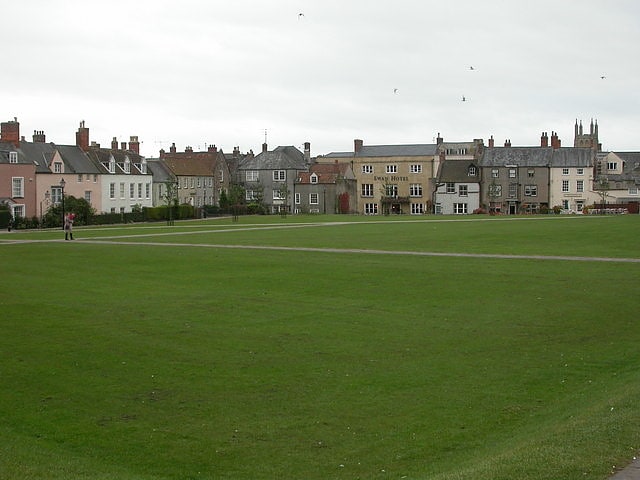
English civil parish. Wells St Andrew, or St Andrew Liberty, or derivations thereof, was a liberty, ecclesiastical parish, and later a civil parish, containing Wells Cathedral and surrounding land, in Somerset, England.[7]
Chain Gate

The Chain Gate in Wells, Somerset, England, is an entrance gateway adjacent to the north side of Wells Cathedral, controlling access from St Andrew Street to the Cathedral Green within the Liberty of St Andrew. It is a Grade I listed building. It was built around 1460 to link the cathedral to Vicars' Close.[8]
The Bishop's Eye

The Bishop's Eye in Wells, Somerset, England, is an entrance gateway into a walled precinct, the Liberty of St Andrew, which encloses the twelfth century Cathedral, the Bishop's Palace, Vicar's Close and the residences of the clergy who serve the cathedral. It has been designated as a Grade I listed building.
The Bishop's Eye was built around 1450, by Bishop Thomas Beckington (also spelt Beckyngton), and provides the entrance to the Bishop's Palace. It forms one of a pair with the Penniless Porch which formed the gateway into the cathedral from the market place and is in a similar style.
It is a three-storey building of Doulting ashlar stone, with a copper roof. The timber gates were added in the 18th century. On the front of the structure facing into the market place are a statue niche and heraldic shields carved into the stonework.
It is frequently photographed and has appeared in films such as Hot Fuzz. It was drawn in 1785 by Joseph Mallord William Turner and painted in 1920 by Ernest Haslehust.[9]
Penniless Porch

The Penniless Porch in Wells, Somerset, England, is an entrance gateway into a walled precinct, the Liberty of St Andrew, which encloses the twelfth century Cathedral, the Bishop's Palace, Vicar's Close and the residences of the clergy who serve the cathedral. It has been designated as a Grade I listed building.
The Penniless Porch was built around 1450, by Bishop Thomas Beckington (also spelt Beckyngton) and bears his rebus or badge on the cathedral side. It forms one of a pair with The Bishop's Eye which formed the gateway into the Bishop's palace from the market place.
It is a three-storey building of Doulting ashlar stone. The roof is behind a battlemented parapet. It is connected to the adjacent buildings and the rooms above the archway are used by the company occupying No 16 Market Place. The first floor room has panelling from the 17th century.
The Penniless Porch was painted by Joseph Mallord William Turner in 1795.
It was named for the beggars who plied their trade there, however in 2016 a man was prosecuted for begging nearby.[10]
Vicars' Close

Street in Wells, England. Vicars' Close, in Wells, Somerset, England, is claimed to be the oldest purely residential street with original buildings surviving intact in Europe. John Julius Norwich called it "that rarest of survivals, a planned street of the mid-14th century". It comprises numerous Grade I listed buildings, comprising 27 residences, built for Bishop Ralph of Shrewsbury, a chapel and library at the north end, and a hall at the south end, over an arched gate. It is connected at its southern end to the cathedral by way of a walkway over Chain Gate.
The Close is about 460 feet (140 m) long, and paved with setts. Its width is tapered by 10 feet (3.0 m) to make it look longer when viewed from the main entrance nearest the cathedral. When viewed from the other end it looks shorter. By the nineteenth century the buildings were reported to be in a poor state of repair, and part of the hall was being used as a malt house. Repairs have since been carried out including the construction of Shrewsbury House to replace buildings damaged in a fire.
The Vicars' Hall was completed in 1348 and included a communal dining room, administrative offices and treasury of the Vicars Choral. The houses on either side of the close were built in the 14th and early 15th centuries. Since then alterations have been made including a unified roof, front gardens and raised chimneys. The final part of the construction of the close was during the 1420s when the Vicars' Chapel and Library was constructed on the wall of the Liberty of St Andrew. The south face includes shields commemorating the bishops of the time. The interior is decorated with 19th-century gesso work by Heywood Sumner and the building now used by Wells Cathedral School.[11]
Address: Vicar's Close Street, BA5 2 Wells